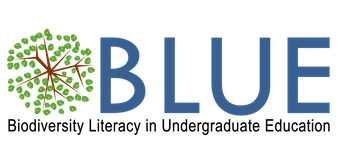The Evolution (and Coevolution) of Flowering Plants Virtual Classroom
Author(s): Anna Monfils1, Debra Linton1
Central Michigan University
2237 total view(s), 624 download(s)
Description
Upon Completion of this module students will be able to:
- Describe the role of flowers in angiosperm reproduction.
- Identify the parts of a flower.
- Explain the role of pollinators in the life history of angiosperms.
- Define coevolution and identify selection pressures that exist between pollinators and the plants they pollinate.
- Predict pollinator/plant pairs based on morphological traits.
- Collect data from a digitized natural history collection.
- Analyze spatial co-occurrence data for pollinators and the plants they pollinate.
- Tools of Biology: Discuss how data from natural history collections can be used to investigate scientific questions with large temporal or spatial scales.
The angiosperms (Phylum Anthophyta) are unique compared to the rest of the plant phyla in that they produce flowers and fruits as part of their sexual reproduction. Since plants are immobile, they are not able to travel in order to seek mates, copulate, and disseminate their offspring. As a result, plants have evolved a number of novel strategies in order to accomplish these tasks. Flowers and fruits are modified in a variety of ways in order to facilitate pollination and seed dispersal, both by biotic and abiotic means.
In this lab, you will explore the diversity of flower and fruit adaptations that have evolved to accomplish pollination and seed dispersal and you will investigate the coevolution of angiosperms and their pollinators. In addition, you will be introduced to another “tool” that biologists use to study life… Natural History Collections.
Notes
Image source: "Ladybug Pollination" by nate hughes is licensed under CC BY-NC-SA 2.0
Cite this work
Researchers should cite this work as follows:
- Monfils, A., Linton, D. (2021). The Evolution (and Coevolution) of Flowering Plants Virtual Classroom. Biodiversity Literacy in Undergraduate Education, QUBES Educational Resources. doi:10.25334/RT9Q-4V46
